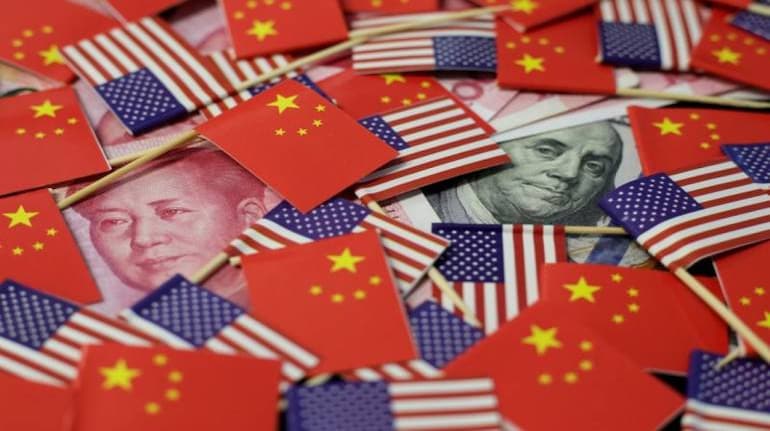



The US dollar’s dominance as the world’s reserve currency is unlikely to be successfully challenged by the renminbi, the Chinese currency, even as the globe gradually fractures into competing spheres of influence between the two power centres, according to economists.
“Warnings of the imminent demise of the dollar are nothing new. In the 1990s, analysts argued that the dollar’s status as the global reserve currency would be threatened by the yen. In the 2000s, it was said that the newly-established euro was going to challenge the dollar. Now, it is the turn of the renminbi,” Neil Shearing, Group Chief Economist at Capital Economics, said in a note on May 2.
“While the amount of world trade that is settled in renminbi is likely to increase over the coming years, it is unlikely to seriously threaten the dollar’s position at the heart of the global financial system,” he said.
The US dollar has been the anchor of the global currency system since the start of the Bretton Woods system in 1944, first in a formal way, then more informally after the demise of the Bretton Woods system in 1973.
“The US dollar may be approaching the end of its absolute reign in the global monetary infrastructure. However, it may still take years, if not decades, before the dollar standard comes to an end,” Wim Boonstra, Special Economic Advisor and Economist at RaboResearch Global Economics & Markets, said in a special report on the dollar.
“Moreover, it is unclear what the future system may look like, as a renminbi-based system would not be acceptable for western democracies,” he said.
US-China tussle
The US and China are engaged in a conflict at various levels as Beijing seeks to be the apex global power, displacing Washington. The US has curbed shipments of high-end chips to China and seeks to shelter Taiwan, on which Beijing lays a historical claim.
The tussle is ratcheting up tensions in the region, with an arms race starting in the Indo-Pacific. Chinese President Xi Jinping is growing his influence in the Middle East and is winning new admirers, from France’s President Emmanuel Macron to Brazil’s Luiz Inácio Lula da Silva.
Recent high-level meetings between Xi and other heads of state like Mohammed bin Salman of Saudi Arabia and the leaders of the Gulf Cooperation Council (GCC) include a push to settle energy trade between China and the Gulf in renminbi. In April, Brazil’s President Lula called for an end to the dollar’s dominance in world trade.
Also read: Thaw in Sino-American ties seems distant as Beijing snubs US overtures
Not so quick a fall
Even as global fracturing could fundamentally reshape the economic and financial landscape over the coming decade, the consequences for the dollar are likely to be less dramatic than many argue now, Shearing said.
Firstly, the dollar’s heft principally comes from the dominant use of the greenback and the US financial system in cross-border transactions.
According to a survey by the Bank of International Settlements (BIS), 88 percent of transactions in the foreign exchange market in 2022 took place in dollars – almost the same as in the 1980s. Only around 5 percent involved the renminbi.
Secondly, trade between countries that align with China still accounts for only 6 percent of global trade. In contrast, over half the global trade takes place within the US bloc, and over 80 percent of global trade involves a country that aligns with the US. As such, this trade will continue to be denominated overwhelmingly in dollars.
Moreover, China’s high domestic savings rate and large current account surplus work against the renminbi becoming a serious rival to the dollar. Its capital controls and political control over economics also work against it.
“For the renminbi to become a major international currency, China would need to provide the rest of the world with large quantities of safe, liquid and convertible renminbi-denominated assets to serve as reserves for other central banks and collateral in financial markets,” Shearing said.
Any alternative currency to the dollar would need to be backed by strong and stable institutions, issued by a central bank that operated an open capital account and then overcomes the strong network effects that underpin the dollar’s global dominance.
“Wind the clock forward 10 years and the most likely outcome is a more fragmented global financial system – but one that still has the US dollar at its core,” Shearing concludes.
Also read: Why India will tilt the US way to gain from friend-shoring trend
Dollar steadies
The trade-weighted dollar, or the DXY, has been roughly unchanged over the last month despite the First Republic Bank falling into the hands of JPMorgan and plenty of market-moving data.
This week, the Federal Open Market Committee meeting and April jobs report will sway the dollar.
Still, Fed Chair Jerome Powell may not deliver enough to feed dollar bears and the dollar could end up modestly firmer, Chris Turner, Global Head of Markets and Regional Head of Research for UK & CEE at ING, said in an article.
Discover the latest Business News, Sensex, and Nifty updates. Obtain Personal Finance insights, tax queries, and expert opinions on Moneycontrol or download the Moneycontrol App to stay updated!
Find the best of Al News in one place, specially curated for you every weekend.
Stay on top of the latest tech trends and biggest startup news.